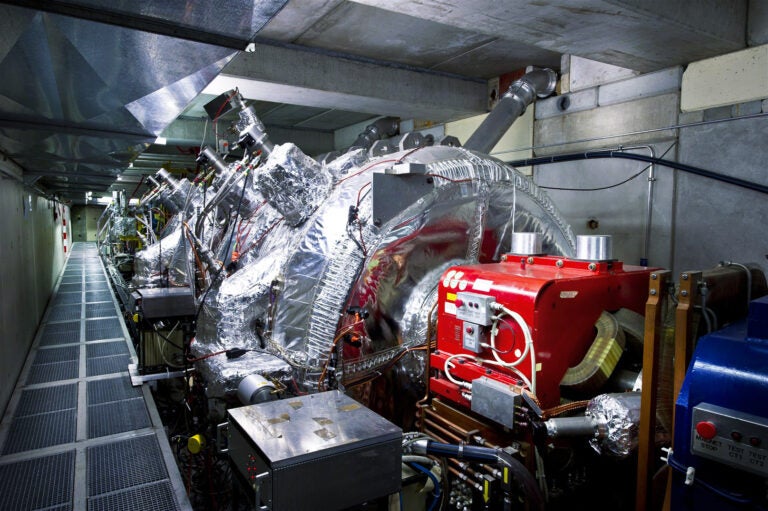Cosmic microwave background (CMB) researchers using data from the Wilkinson Microwave Anisotropy Probe (WMAP) have measured the angles of the longest triangle you can imagine. One corner is on Earth, and the other two are so far away that light has traveled about 13.3 billion years to reach us. Scientists found the angles of this triangle add up to 180°, to within small measurement uncertainties.
The far edge of this distant triangle corresponds to the size of a typical spot on the CMB map — each splotch has an angular size similar to the Moon’s. The spots are hot and cold areas in the hydrogen plasma that filled the infant universe, and have been imaged with sensitive microwave cameras aboard WMAP. — MAX TEGMARK, MASSACHUSETTS INSTITUTE OF TECHNOLOGY, CAMBRIDGE










